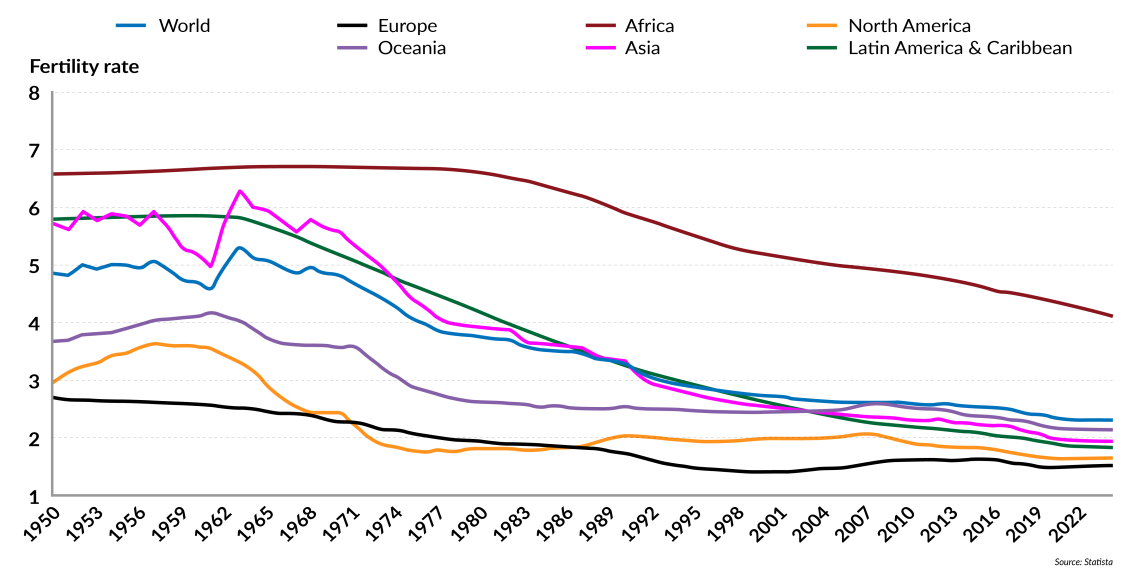State pension programs feel the strain
of aging populations
Politicians do not pay much attention to demography. Given their electoral horizons, this is hardly surprising. The so-called demographic crisis and its consequences unfold over decades, while in most countries elections of some sort take place at least every two years. Little heed is paid to whether, in the near future, the electorate might get a few months older and possibly a little more worried about how they will make ends meet in their retirement.
However, politicians do worry about the state budget, and an aging population is a source of greater and greater concern in economies where it is the government, not individual savings, that funds most people’s pensions schemes. The problem is especially acute if these state programs operate on a pay-as-you-go principle, where pensions are funded by a share of the tax revenues from current workers. Of course, all other things being equal, the larger the number of retirees and the smaller the number of taxpayers, the larger the share of tax revenue state pension funds need. Not surprisingly, in some countries – such as Italy and France – the system is cracking.
Painful but effective: Restrict pensions
Policymakers have engaged in some makeshift fixing, which is rational for typical, myopic governments. State-(mis)managed pension schemes can be fixed – painfully, but relatively simply. The retirement age is being gradually increased and early retirement more heavily penalized, to contain the ballooning ratio between retirees and taxpayers. Payments are being cut by changing the parameters that define the annual amount to which each retiree is entitled. Typical examples are the move from the wage-linked criterion to capitalization; being less than transparent about the implicit returns on the taxpayers’ forced savings; and failing to fully index current pensions to price inflation.
These mechanisms are already in place. They are effective, and they will eventually transform the current state pension systems into some sort of basic-income scheme where small amounts are handed out to the elderly who failed to save enough for their old age. By contrast, efforts to rely on indiscriminate immigration of potential taxpayers are rife with problems: Many argue that their cost (reliance on the welfare state of the hosting countries and the burden of failed integration) outweighs the benefit for the treasury.
Longer lives and fewer births
Demography is largely the outcome of two variables: birth and mortality rates. Birth depends on the natural drive to reproduce one’s genes and on the costs and benefits of having children. Mortality depends on accidents, diet, lifestyle, environmental conditions and healthcare. The good news is that over recent decades, all the variables affecting mortality have changed for the better. In short, people’s living standards have increased dramatically and medical treatments have improved enormously.
Facts & figures
Fertility rate in each continent and worldwide, 1950-2024

The problematic aspect is fertility. In 2022, the fertility rate was 2.3 children per woman for the entire world (it was 4.9 in 1950 and 2.7 in 2000). It is currently about 2.0 in India, 1.7 in the United States, 1.5 in the European Union, 1.4 in Russia, 1.2 in China and 0.8 in South Korea. World population declines with a fertility rate below 2.2. The explanation of low (and declining) fertility is relatively simple: Many couples now believe that the opportunity cost of having even one child is too high, let alone two or three. It appears that many households are unwilling to cut their material living standards to have children, especially if those children are unlikely to support their parents if the need arises.
Can we pay people to procreate?
Handing out subsidies to encourage birth is unlikely to produce significant results. On the one hand, subsidies must be financed somehow, whether that be raising taxation, increasing public debt or printing money. This could reduce disposable incomes and further discourage couples from having children. Of course, one could tax childless couples and use the proceeds to finance those with children. Although this was actually overtly done in the past (for example, in fascist Italy), today such measures are impractical and morally murky, to say the least.
On the other hand, it is unlikely that a few hundred euros a year for a limited number of years would really make a difference. Rather, a large share of the subsidies would probably end up as a gift to those who would have had children anyway, or who decide to have children just to pocket the subsidy.
Living standards also play a role in the declining birth rates. If one considers the official national statistics, it is clear that over recent decades, most people in the world (including in the West) are better off. Today’s households may find it hard to obtain a satisfactory living standard, either because the notion of “satisfactory” has changed significantly, or the official figures are misleading, or both – the third option is probably closer to the truth. The race for electoral consensus has encouraged politicians to promise the moon to their voters.
Not surprisingly, the moon is kindly provided by governments through taxation and regulation, and the suppliers themselves (governments) proclaim that reaching out to the moon is a basic right. People adjust their expectations accordingly, and give up on having children if the moon is at risk. Nowadays all households are de facto forced to buy state services that allegedly guarantee “basic rights” at a price that exceeds their value for the buyer (for example, education and health). Households spend more, consumption figures rise, but individuals do not get their value for money. There is some truth in the common feeling that one works harder than in the past, but ends up worse off.
Last, but not least, today’s incomes do not really correspond to purchasing power at market prices (a share of what we buy is overpriced) and people find it difficult to lower their living standards. As a result, households actually stop saving and, in many cases, eat into their capital. This phenomenon has been observed in the U.S., but is more and more frequent in Europe, too. One of the consequences is that adult children know they will rely on a smaller amount of family wealth to meet emergencies and will be discouraged from having children in turn.
Scenarios
A demographic crash per se is neither unavoidable nor is it a real crash. Having fewer people around is neither good nor bad, and lower mortality (aging) also means that we are healthier than our grandparents and great-grandparents and that, therefore, working lives are longer and more productive (for those willing to work). Yet, alarm is justified, because over the past 50 years, poor policymaking has replaced the notion of individual responsibility with that of social responsibility and undermined the principles of sound finance. In this light, we are heading toward two possible scenarios.
Most likely: Basic-income pension programs
Backtracking on social responsibility by limiting social programs and regulation is a difficult path that takes time and requires either an economic or a political shock. Neither of them is around the corner in the Western world. Therefore, we are likely to experience botched attempts to enhance a soft public-finance landing. In plain English, today’s welfare states will gradually be transformed into giant basic-income programs, while the private sector will take over in a variety of areas, but subject to strict regulation.
Less likely: Productivity booms
On the other hand, a less likely scenario relies on a substantial acceleration in production, which in the presence of a stagnant working population requires significantly higher productivity. This is possible in theory, since scientific and technological progress is rapid. However, policymakers, especially on the two sides of the Atlantic, seem more interested in perfecting social justice and extending alleged “basic rights” than encouraging youth to work harder, developing the skills required and allowing entrepreneurs to translate technological breakthroughs into successful business stories.
































